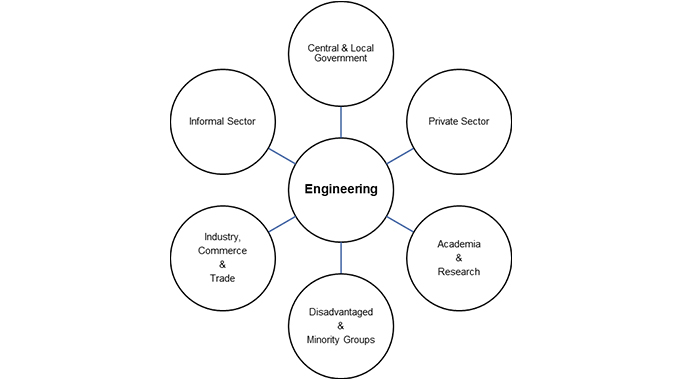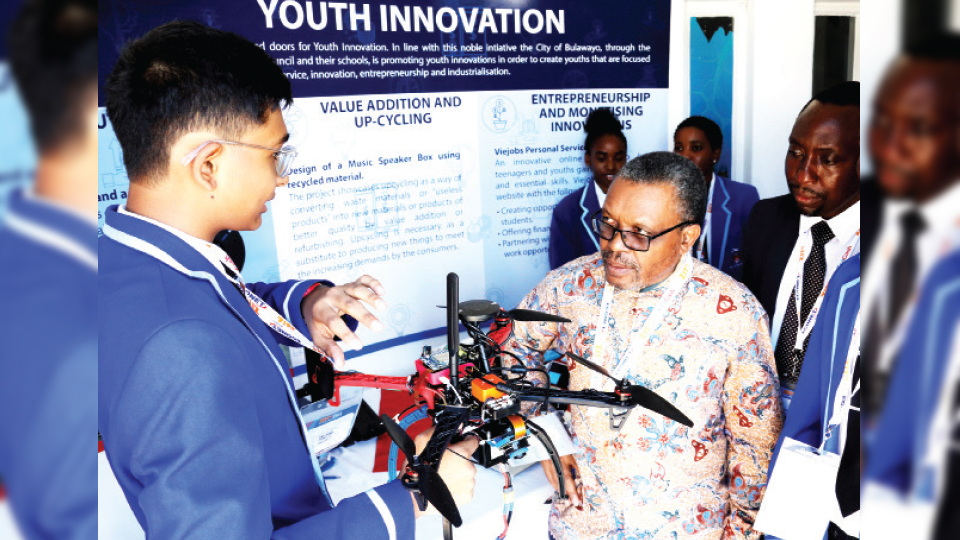Engineers should take an active role in NDS1 success

By Eng Thami Mpala
THERE has been no other time as opportune as this for engineers to take the lead and realize the objectives and benefits of the National Development Strategy (NDS.1). This is a five-year medium-term plan that builds momentum towards realisation of the country’s vision of creating an upper middle-income economy by 2030.
This vision is to work towards a prosperous and empowered upper middle-income society with job opportunities and a high quality of life for its citizens. Furthermore, the NDS1 was developed in the face of the unprecedented Covid-19 pandemic, which disrupted economic activities in the country and as a result compromised infrastructure development.
Zimbabwe, thus far, since the coming in of the New Dispensation has done well to place Government’s focus on infrastructure development. Great strides have been made so far and this is evident by the number of ongoing large infrastructure projects being constructed across the country.
However, more needs to be done and the momentum needs to continue. To achieve this purpose, a holistic approach must be taken to fulfil the goals of Vision 2030.
The sustainable development goals (SDGs) are a set of goals that were adopted by the United Nations in 2015 to end poverty, protect the planet and ensure all people enjoy peace and prosperity by 2030.

With this context in mind, the NDS1 has embedded the SDGs into national priorities of action. The Sustainable Development Agenda Decade of Action (2020-2030) should see an accelerated implementation of SDGs and a creation of new business models for Africa to create a new economic order with equality, prosperity and peace for all its citizens to achieve the Africa we want – and Zimbabwe is no exception.
The Zimbabwe Institution of Engineers (ZIE) is a learned society of engineering professionals mandated to act in an advisory capacity to Government, industry and educational institutions to promote and maintain appropriate standards of engineering competence.
The operations and membership of ZIE are regulated by a Private Act of Parliament, and in turn regulated by the Engineering Council of Zimbabwe (ECZ) through the Engineering Council Act (Chapter 27:22).
ZIE calls upon all engineers across all sectors to take a leading role in the development and advancement of engineering infrastructure in the country.
Engineering has played a critical role in increasing the health and quality of life before the Covid 19 pandemic, but now is the time to create better water supply systems, municipal sewer networks, wastewater treatment plants, safer and health-standard compliant buildings, improved agriculture with new food and precision mechanization, transportation systems, green energy infrastructure and modernized ICT services and products for future needs and a sustainable economy.
There is a need for a workable, efficient and holistically-crafted structure that will endeavor to achieve and make realization of the objectives and milestones of the national development strategy.
This proposed working structure is developed from the Sustainable Development Goals (SDGs) theme of “leaving no-one and no place behind”.
By “leaving no-one behind”, this means we need to adopt a holistic approach to make sure we include everyone and every sector to participate in the national development strategy.
Central to this structure is the engineering sector and the realization to the fact that strong engineering capacity is needed to shoulder this great responsibility. Engineers are responsible for the sustainable development of humanity and the planet and therefore engineering needs to be the pivot to the drive the country’s social, development and economic agenda. Moreso, the aspect of maintenance cannot be over emphasized for the sustainable use of public infrastructure.
Monitoring and maintenance are critical functions of engineering and should not be left out in the infrastructure supply chain.
Engineering being central to the structure allows for the efficient integration of all sectors so that views and contributions are taken on board with the requisite scientific and engineering linages.
It allows to integrate the skills, input and methodologies of the various sectors shown in the diagram into a collaborative effort for the good of the strategy. Then, once the strategy is underway, the central pillar must maintain communication and flow of information to ensure continuity and effectiveness of the strategy.
Central government are key to this process in that they set the framework in which all sectors work and align. In essence, this holistic approach is client-centric (Government) and can be a significant differentiator in realization of the objectives of the national development strategy.
Partnerships to realize this vision are welcome and this includes all bodies and institutions within the built environment.
We implore Government to engage engineers so that discussions and deliberations can begin to see to it that this proposal be set up and implemented.
Engineers must assume an advisory role to Government as enshrined in the ZIE & ECZ Acts. This proposal could be set up as a special task force or special implementing NDS1 technical committee so that the objectives of Vision 2030 are met inclusively.
Together as Zimbabweans, the goals can be realized with great expectancy and are very much achievable with the right structures and purpose in mind. The now most common saying goes… “If you want to go fast, go alone. If you want to go far, go together”.











Comments